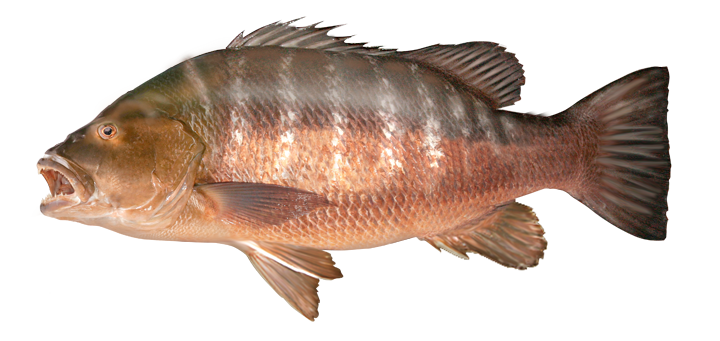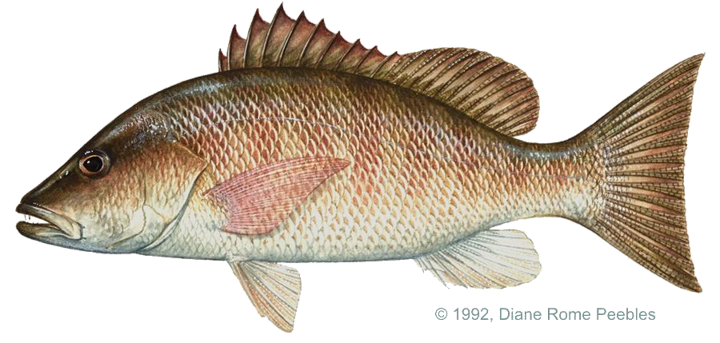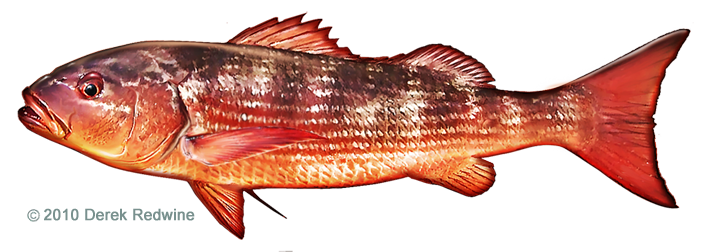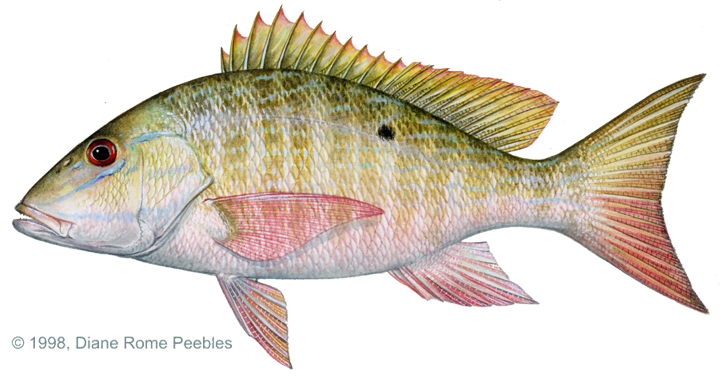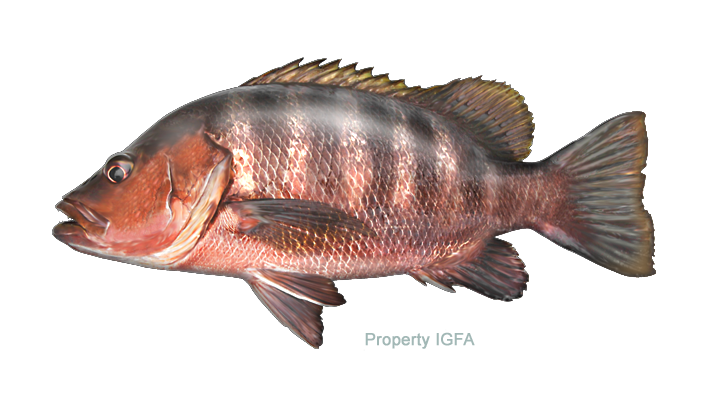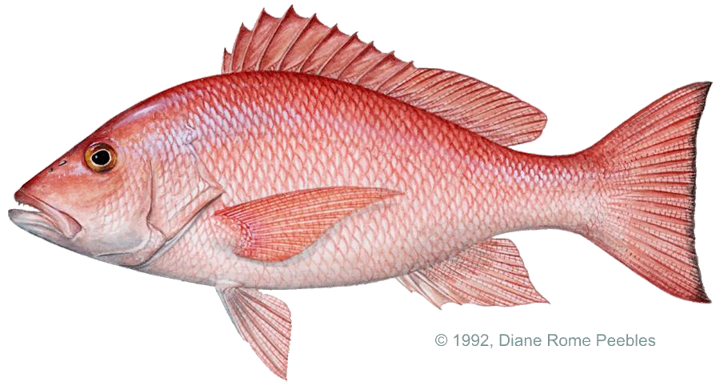Game Fish Identification Reference Guides
Snapper, Atlantic cubera
(Lutjanus cyanopterus)
(Lutjanus cyanopterus)

(Cuvier, 1828); LUTJANIDAE FAMILY; also called Cuban snapper
It is found throughout the western Atlantic from Florida and Cuba southward to Brazil. It is the giant of all the snappers, attaining weights in excess of 100 lb (45 kg) and an overall length in excess of 4 ft (1.21 m). The snapper family Lutjanidae consists of some 250 different species in 25 genera. At least fifteen species are found in the waters of North America, and ten of these belong to the genus Lutjanus.
Dorsal fins are connected and consist of 10 spines, followed by 14 rays. The anal fin is roundish and consists of 8 rays. There are 5 7 gill rakers (not including rudiments) on the lower limb of the first branchial arch. The pectoral fins do not quite reach to the origin of the anal fin. The eyes are dark red and the body ranges from gray to greenish, often tinged with red. Its closest look alike may be the gray, or “mangrove”, snapper (L. griseus). Like most snappers the gray snapper has more gill rakers on the average (7 9 on the lower limb of the first branchial arch) than does the cubera. It rarely exceeds 10 lb (22 kg). The red snapper differs not only in color and size, but in having 9 anal rays and 8 10 gill rakers on the lower limb of the first arch. Also, its pectoral fin reaches to or beyond the origin of its anal fin, which is angular, not roundish.
It ranges in depths from 2 3 ft (0.92 m) to 120 ft (36 m). It is a hard fighter, particularly on light tackle, and a fine food fish, though the flesh of larger fish may be coarse
It is found throughout the western Atlantic from Florida and Cuba southward to Brazil. It is the giant of all the snappers, attaining weights in excess of 100 lb (45 kg) and an overall length in excess of 4 ft (1.21 m). The snapper family Lutjanidae consists of some 250 different species in 25 genera. At least fifteen species are found in the waters of North America, and ten of these belong to the genus Lutjanus.
Dorsal fins are connected and consist of 10 spines, followed by 14 rays. The anal fin is roundish and consists of 8 rays. There are 5 7 gill rakers (not including rudiments) on the lower limb of the first branchial arch. The pectoral fins do not quite reach to the origin of the anal fin. The eyes are dark red and the body ranges from gray to greenish, often tinged with red. Its closest look alike may be the gray, or “mangrove”, snapper (L. griseus). Like most snappers the gray snapper has more gill rakers on the average (7 9 on the lower limb of the first branchial arch) than does the cubera. It rarely exceeds 10 lb (22 kg). The red snapper differs not only in color and size, but in having 9 anal rays and 8 10 gill rakers on the lower limb of the first arch. Also, its pectoral fin reaches to or beyond the origin of its anal fin, which is angular, not roundish.
It ranges in depths from 2 3 ft (0.92 m) to 120 ft (36 m). It is a hard fighter, particularly on light tackle, and a fine food fish, though the flesh of larger fish may be coarse













